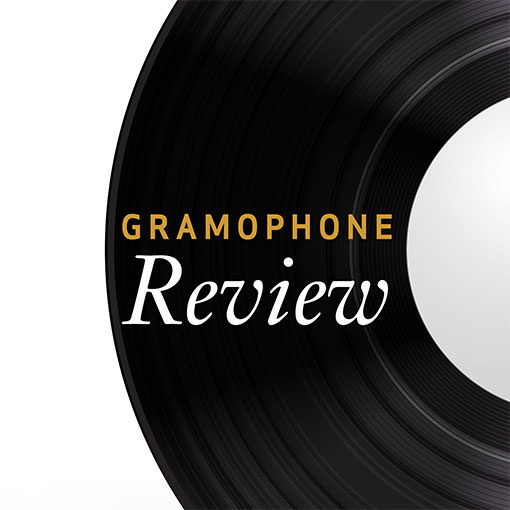Mahler Symphony No 6
View record and artist detailsRecord and Artist Details
Composer or Director: Gustav Mahler
Label: DG
Magazine Review Date: 1/1990
Media Format: Cassette
Media Runtime: 0
Mastering:
DDD
Catalogue Number: 427 697-4GH2

Tracks:
| Composition | Artist Credit |
|---|---|
| Symphony No. 6 |
Gustav Mahler, Composer
Gustav Mahler, Composer Leonard Bernstein, Conductor Vienna Philharmonic Orchestra |
| Kindertotenlieder |
Gustav Mahler, Composer
Gustav Mahler, Composer Leonard Bernstein, Conductor Thomas Hampson, Baritone Vienna Philharmonic Orchestra |
Composer or Director: Gustav Mahler
Label: DG
Magazine Review Date: 1/1990
Media Format: CD or Download
Media Runtime: 115
Mastering:
DDD
Catalogue Number: 427 697-2GH2

Tracks:
| Composition | Artist Credit |
|---|---|
| Symphony No. 6 |
Gustav Mahler, Composer
Gustav Mahler, Composer Leonard Bernstein, Conductor Vienna Philharmonic Orchestra |
| Kindertotenlieder |
Gustav Mahler, Composer
Gustav Mahler, Composer Leonard Bernstein, Conductor Thomas Hampson, Baritone Vienna Philharmonic Orchestra |
Composer or Director: Gustav Mahler
Label: Souvenir Records
Magazine Review Date: 1/1990
Media Format: CD or Download
Media Runtime: 87
Mastering:
ADD
Catalogue Number: UKCD2024/5

Tracks:
| Composition | Artist Credit |
|---|---|
| Symphony No. 6 |
Gustav Mahler, Composer
(Royal) Stockholm Philharmonic Orchestra Gustav Mahler, Composer Jascha Horenstein, Conductor |
Author: Edward Seckerson
Even so, Bernstein's acute awareness of Mahlerian sonority has, if anything, intensified since 1967: the Scherzo, with its extreme highs and lows—shriek of piccolo set against grunting basses and contra-bassoon, the rattle of xylophone—is every inch the dance of death, somehow the more unsettling for its out and out exuberance. Particularly chilling to the marrow is his handling of the trios—above all the deformed slow waltz with its skeletal col legno and dissonant stopped-horn sneers; tempo and rubato are perfectly judged. To be transported from the unearthly scream at the apex of this movement (the unreal texture here is wonderfully elucidated) to the remote serenity of the Andante is a healing experience, albeit cut cruelly short. The Vienna strings play with rare luminosity; lonely cor anglais and distant horn hang on the air.
Which brings me to Bernstein's remarkable account of the finale, and those of us weaned on his still sensational CBS realization will notice the considerable gain in breadth and ballast with less reliance now on desperate stringendos pressing the music forward into each abortive climax. There is a greater inexorability and sense of burden now; the battling march against time is more ferociously put down at each hammer blow: the first brings awesome trombones, and Vienna trumpets that really savage the stark two-part counterpoint above; with the second, it is the trumpets and tam-tam that mercilessly dominate. One notes, too, how the opening minutes of the movement benefit hugely from more space: the impressionistic texture sounds more extraordinary than ever, the various fragments of material caught in a kind of cosmic limbo. When horns and then trumpets rear up just after 2'31'', Bernstein's characterization, like cries from the abyss, achieves a terrifying modernity. Likewise the hollow twang of a solitary string bass pizzicato at each return of the heartless 'fate' motif.
Recording and playing are simply beyond reproach, and the second CD finds Thomas Hampson in a feeling, grieving account of the only logical coupling for the symphony—Kindertotenlieder. His sensitive head-voice work is particularly affecting, though I still have a deep-seated preference for the female voice in these songs. The maternal connotations inevitably add something.
But back briefly to the symphony to acknowledge the CD remastering of Horenstein's live Stockholm performance (or rather performances) from 1966—of specialist interest to any who cherished his pioneering Mahler of this period. Not that it's easy making allowances for so many technical imperfections (not least in the brass) when you've just been listening to the Vienna Philharmonic. The Stockholm trumpets, for instance, were caught on particularly bad nights, split notes are many, rhythmic laxities make for a recurrent dissipation of tension. But Horenstein's inner-light still shines through, the work's black-hearted intensity still communicates. Tempos seem broader than they in fact are, the heaving bulk of the outer movements quite literally dragging us up through crisis after crisis. I don't think I've ever heard so much made of the great crunching appoggiatura near the close of the first movement (23'18''). The recording is a little cavernous but clear.
As for an overall recommendation, Karajan and Abbado (both DG) reward re-acquaintance, but I would still part company with my colleague RO over the Tennstedt's EMI recording (see his original LP review, 12/83, and Correspondence 2/84 and 4/84) which remains, to my mind, the most uncompromising and ultimately the most disturbing vision of the piece yet committed to disc. But if you are comfortable with Bernstein's tempo for the first movement, then his new account (above all, its momentous finale) is at least as fine as any Mahler he has yet given us.'
Discover the world's largest classical music catalogue with Presto Music.

Gramophone Digital Club
- Digital Edition
- Digital Archive
- Reviews Database
- Full website access
From £8.75 / month
Subscribe
Gramophone Full Club
- Print Edition
- Digital Edition
- Digital Archive
- Reviews Database
- Full website access
From £11.00 / month
Subscribe
If you are a library, university or other organisation that would be interested in an institutional subscription to Gramophone please click here for further information.





